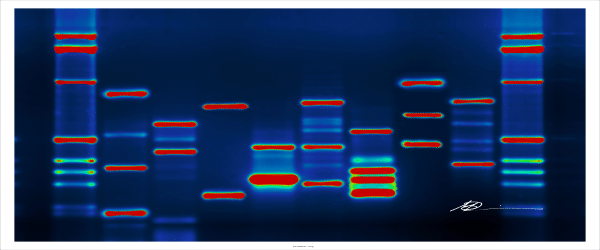Working at a plasmid repository, I get a lot of feedback from scientists who are relieved we exist simply because that means they don’t have to request a plasmid directly from another academic lab. Either they’ve had a bad experience making requests in the past, or they really don’t know how to go about doing it in a professional manner.
Nothing you can do will guarantee that a plasmid request will be fulfilled, but here are a few rules of etiquette to consider. Note that I’m talking about plasmids, but most of these “rules” can be applied to nearly any biological reagent:
Asking for the Plasmid
1. Introduce yourself and explain why you want the plasmid
Enjoying this article? Get hard-won lab wisdom like this delivered to your inbox 3x a week.

Join over 65,000 fellow researchers saving time, reducing stress, and seeing their experiments succeed. Unsubscribe anytime.
Next issue goes out tomorrow; don’t miss it.
Remember that you are essentially asking your colleague for a favor. Yes, if a scientist publishes a plasmid, there is an obligation to distribute it, but remember who put in the work to make the reagent. Explain who you are, where you found out about the plasmid, and if possible, explain how you might be using it. An ethical scientist should provide you with the plasmid (and an annotated map of the plasmid) regardless of how you’re using it, but if you can demonstrate that you’re not a direct competitor, that might move things along for you.
2. Pay for shipping
This one might seem like a no-brainer, but I’ve talked to scientists who had essentially stopped honoring plasmid requests because they were spending a small fortune on shipping. Asking a scientist to send a reagent and pay for the shipping takes some hutzpah. Cough up your FedEx number and you’ll likely get your plasmid a lot faster.
3. Cooperate with the Material Transfer Agreement (MTA) process
The vast majority of plasmid sharing between academic labs is probably done outside the MTA process. That might be the easiest way of doing things for the parties involved, but it’s not necessarily the best (or legal) way. Many institutions, especially HHMI, are quite rigid about their MTA guidelines and they require researchers to fill them out for every reagent that’s sent out. Don’t begrudge scientists for making you fill out this paperwork–they’re just following the rules. That plasmid you’re requesting is technically “owned” by the institution, not the lab.
After Receiving the Plasmid
1. Show some gratitude
Congratulations! You received your plasmid. Be polite and say thank you. You never know when you might run into this person at a meeting or want to propose a collaboration.
2. Make sure you received what you asked for
Before you go transfecting cells all willy-nilly, you better make sure this plasmid is what you think it is. At the very least, you should do a diagnostic digest. But to really be on the safe side, sequence it. Whether the lab published on this plasmid 1 month ago or 10 years ago, mistakes can be made. Play it safe and do some testing before you commit to an important experiment. If you do find that the plasmid has a problem, let the person who gave it to you know, diplomatically.
3. Acknowledge
If you publish anything that uses these requested reagents, give credit where credit is due. Not only is it the right thing to do, but but it will send people to the right lab should they read your paper and want to request the plasmid in question. Unless you modified the plasmid in some way, you should not be redistributing it without the original lab’s permission. A proper acknowledgment should prevent the issue from arising.
And finally, if you’ve ever used Addgene, you know that we take care of a lot of these steps for you. If you see a published plasmid that you want and it’s not already in the Addgene repository, e-mail help@addgene.org and let us know. We’ll request it for you (and take care of some of the quality control, AND take are of the MTAs).
You made it to the end—nice work! If you’re the kind of scientist who likes figuring things out without wasting half a day on trial and error, you’ll love our newsletter. Get 3 quick reads a week, packed with hard-won lab wisdom. Join FREE here.





